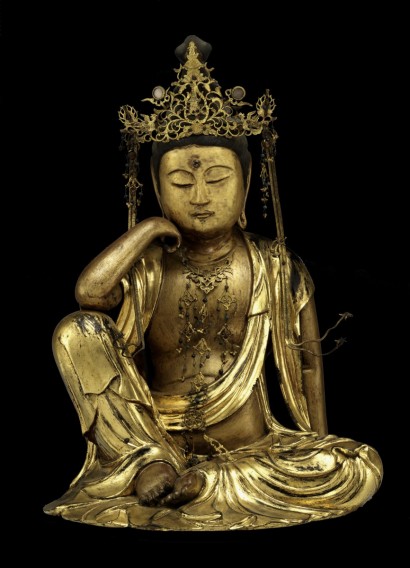Japan, Edo period, ca. 1693; wood with gold, gold leaf, lacquer, and crystal inlay; 16 9/16 x 12 1/8 x 10 1/4 in.; The Metropolitan Museum of Art, Rogers Fund 1956, 56.39, photo © The Metropolitan Museum of Art; source: Art Resource, NY.
Nyoirin Kannon (Chintamanichakra)
Japan, Kamakura period, 14th century; hanging scroll, ink, colors and gold on silk, gold-leaf; 40 x 16 3/8 in.; Nara National Museum, 994.
This exquisite scroll depicts the six-armed form of Nyoirin Kannon on Fudarakusan. Manifesting a luminous halo, the deity delicately balances a dharma wheel on his upraised left index finger, with three wish-fulfilling jewels cupped in front of his heart. As in the sculpture, a moustache appears on his face, indicating a male identity. Both the two- and six-armed forms of Nyoirin Kannon manifest Avalokiteshvara’s typical qualities of salvation and mercy. He once purportedly appeared to Kukai when the famous Japanese monk was in danger of drowning. This figure is quite frequently the principal object of worship in esoteric Buddhist temples, for example, at Nachi.





